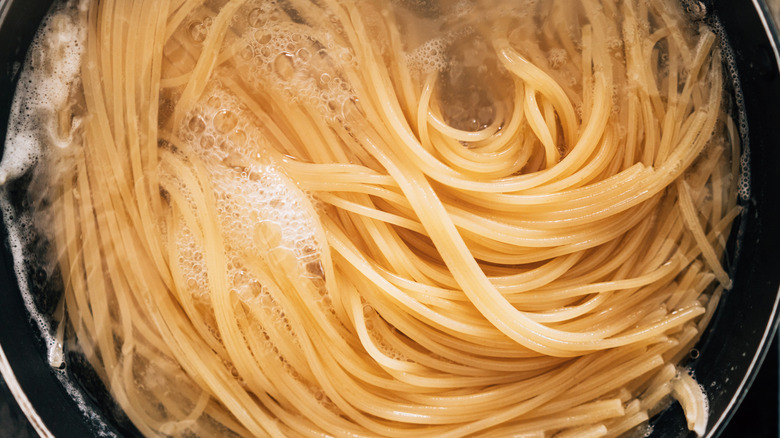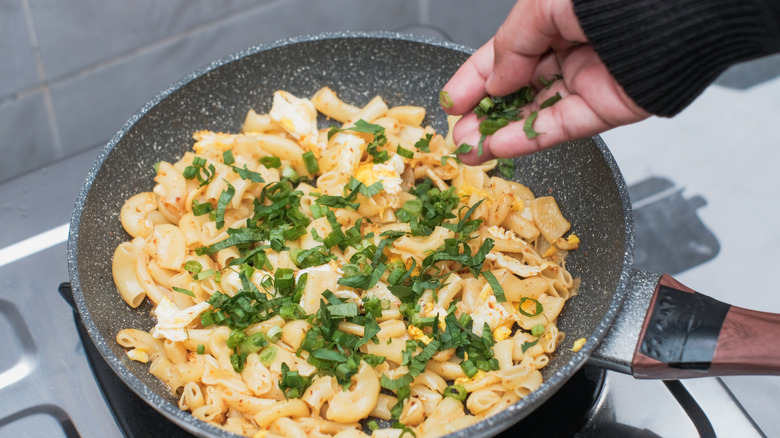Can Pasta Water Be Seasoned With Something Other Than Salt?
Amateur pasta-making aficionados realize that not adding enough salt to pasta water is a mistake that results in bland pasta. With that reasoning in mind, it seems logical that we should be able to add other seasonings or liquids for a more flavorful result. While throwing dry pasta into a big pot of chicken broth or water seasoned with smoked paprika and garlic may seem like a good idea, there isn't a noticeable difference in flavor from just using salted water.
According to Harold McGee, an author who writes about the chemistry and history of food science and cooking, pasta will absorb 1.6 to 1.8 times its weight (via Food52). When cooking pasta in a large pot of water, the added seasonings will not be enough to make any major difference in flavor because not much of the pot's water is absorbed. That's why generously salted water — or Italian sea water, as Giada De Laurentiis uses — is your secret weapon for making pasta. But to truly amplify the flavor of the cooking water and pasta, there is a tried and true method that uses flavorful liquids to cook pasta like risotto. This is called pasta risottata, where most of the cooking liquid is absorbed by the pasta, whether it is chicken broth, wine, or veggie stock.
Cooking pasta risottata for more flavor
If you cook pasta like risotto, it gives super creamy results, without the need for added dairy. The technique for pasta risottata, or pasta a risottata, takes its name from the verb risottare, which means to cook something in the same way you would cook risotto. The science behind risotto's uniquely creamy texture concerns an optimal balance of the starches amylose and amylopectin. These starch molecules are also found in pasta, making it the perfect candidate for this method of cooking.
As with cooking risotto, the technique for making pasta risottata involves toasting the pasta in oil before gradually adding warm liquid, like salted water or a seasoned broth, in small increments and stirring constantly. Continue adding liquid until the pasta is completely cooked. It's also possible to add in some wine, and if you do, you'll want to stir that in before the other liquids and allow some of the alcohol to cook off. Also, it's easier to use smaller-shaped pastas like macaroni, cavatelli, or ditalini to make risottata, but you can use spaghetti or bucatini if you parboil them first.

